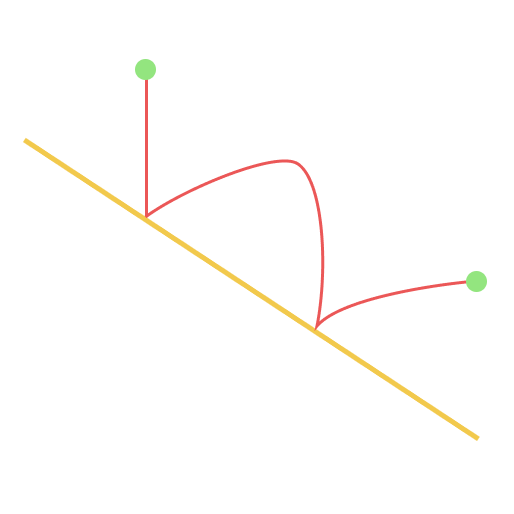How do balls bounce on slopes?
A ball is dropped vertically upon a slope.
What type of progression do the distances between each consecutive bounce form?

Details and Assumptions:
-Ignore air resistance
-Assume all collisions to be perfectly elastic
-The distance in question is the straight line joining two collision points on the slope
This section requires Javascript.
You are seeing this because something didn't load right. We suggest you, (a) try
refreshing the page, (b) enabling javascript if it is disabled on your browser and,
finally, (c)
loading the
non-javascript version of this page
. We're sorry about the hassle.
It is easier to view the situation, not on a slope, but on a horizontal surface. We give gravity a horizontal and vertical component.
Horizontally, the distance between collisions, s , can be given as s = u t + 2 1 a t 2 . Since the horizontal acceleration and the time taken are both constant, we can rewrite this equation as s = C u + D (remember that u is the horizontal component of velocity).
Now, because there is constant horizontal acceleration, the horizontal velocity u increases by the same amount with each bounce. We could, for the sake of things, write this as u n = K + u n − 1 , where u n is the horizontal velocity after the n t h collision.
What does this tell us? Well since the distance between each bounce is C u + D , and u increases by a constant amount between collisions, there must be a constant difference between the distances of each bounce.
And thus the resultant progression is arithmetic .